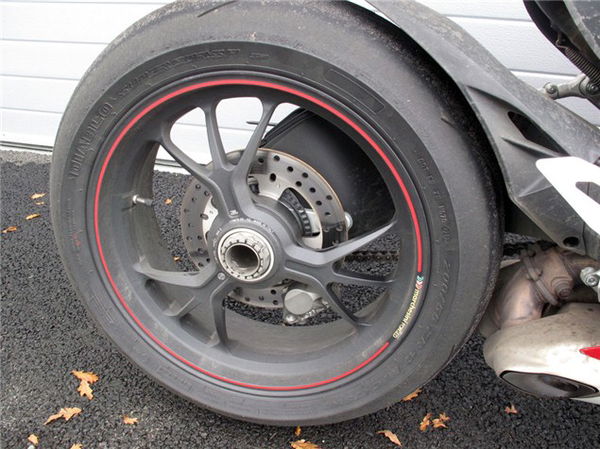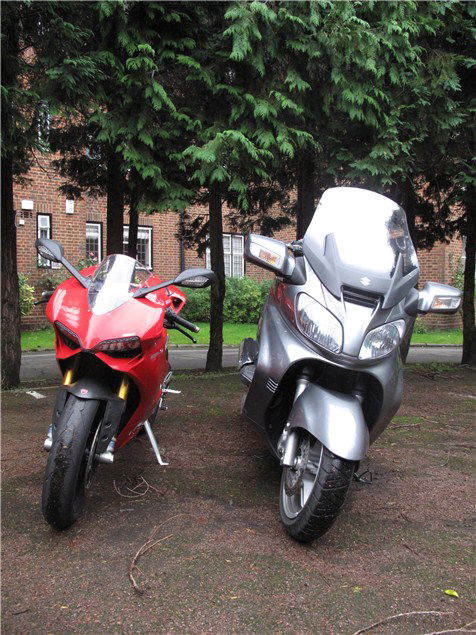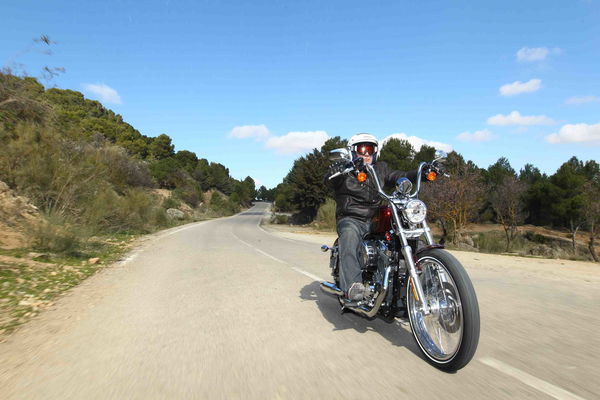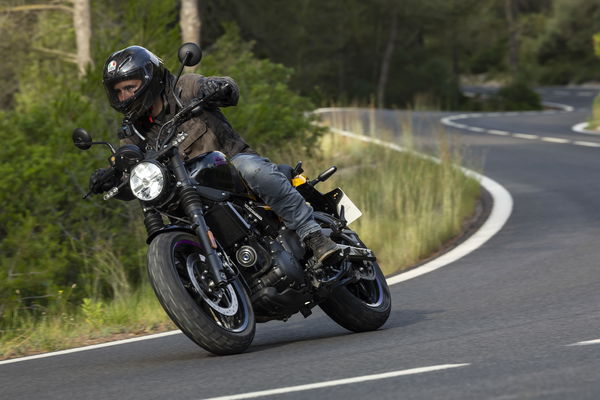1199 Panigale S review
The Ducati 1199 Panigale S absolutely ruled on the billiard table-smooth Yas Marina circuit on its launch but what's it like to live with day to day, on UK roads? Greasy, leaf-covered UK roads?

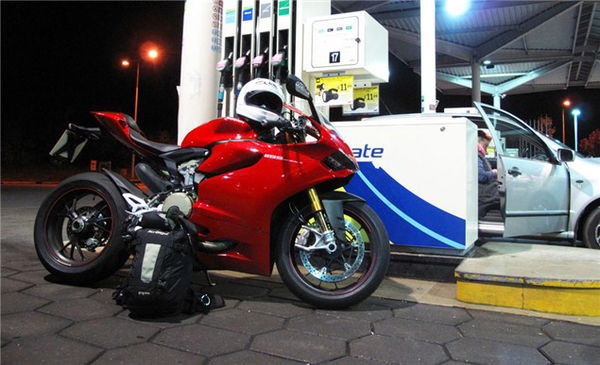
Ducati 1199 Panigale S: Engine
My neighbours could be forgiven for thinking there's a tank at the end of the road, shelling the house next door, but no, it's just me firing up Ducati's incredible-sounding 1199 Panigale S.
It's a Ducati superbike so of course it's noisy and blatantly fast but, like all the best Ducatis; it's an event.
From firing it up, to cruising through town or trying to tap into what it's got to offer; there are no half measures with this bike.
Over the course of a week and 500 miles, it made me giggle, it made me wide-eyed with fear, it dished out confidence and occasionally swiped it back off me but it never ceased to put a smile on my face. Even if, some of the time, that smile was a nervous one.
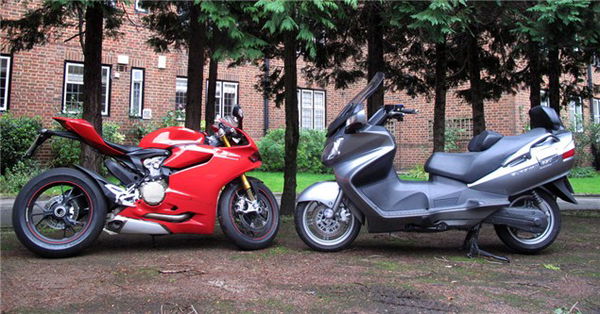
Commuting to work, the Ducati is great in ways not even the smartest Ducati engineer could dream up. Yes, 190bhp is excessive around London, but on the plus side, the heat the Superquadro engine kicks out is better than almost any heated gear I've ever used. Keep it flowing and the heat wafts around you and makes you feel quite smug. Stop at the lights for any length of time and other bikers will hold their palms out in your direction, trying to tap into a slice of your twenty-grand mobile radiator.
It's not just the heat that's good on the morning commute; the noise is too. Yes, to today's society it's anti-social but the Panigale is the only bike I've ridden in a long while that snatches the attention of a smartphone-addicted pedestrian long enough for them not to step out into your path.
Yes, it's noisy and yes, some owners have been struggling with them at trackdays, but it's not noisy like a raucous inline-four with an obscenely large end-can, it's noisy in a way I appreciate. If you tune in, you can hear the major components at work: the gear-driven cams, the valves and those two monsterous pistons but not the clutch: gone is the clackety-clacker-clack of the dry clutch, synonymous with the older generation. At tickover it genuinely sounds like a 50-caliber machine gun, I love it!
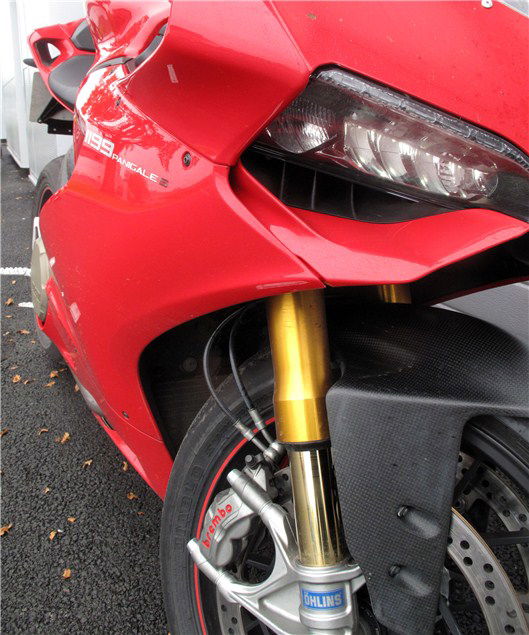
In fourth gear, at 4,000 revs, the Panigale rumbles along quite happily and with just a tiny nudge of the throttle, the fast-revving and eager motor jumps up 1,500 revs and bolts on another 15mph. By the way, I'm addicted to the rev-counter, the way the numbers jump out at you as you move on up the revs is addictive. If you're at all worried about speed, then look away now, but whatever you do, don't look down at your speedo in the middle of an overtake on a country road; you'll probably be doing, well, a 3-month ban.
Talking to another journalist, his gripe was the age-old 'Yes but you can't use it anywhere' that I hear time and time again. Well, you can and you will but like with all superbikes, the moments you can are becoming more and more limited but it just means that when you do, they're that bit more special. You might not wring every last rev from the motor - you don't need to - but on the right road at the right time, getting the Panigale into its stride and tapping into even just a small amount of what it has to offer is one of motorcycling's best experiences.
Yes I know: THINK OF THE KITTENS! Of course, a few people will get their knickers in a twist, blaming me for ruining motorcycling but the fact is, we can't all dodder around the countryside at 62mph on a sticker-clad GS with the fog lights on, wearing enough hi-viz to be seen from space; a Panigale on song and dishing it out is something you just have to experience. Even if it harms the kittens.
Just because it'll do fast doesn't mean you have to ride like an idiot, buzz cars and generally make a nuisance of yourself, but even this morning on greasy, cold, leaf-scattered roads, we were cutting along with the minimal amount of fuss and maximum amount of precision. With the motor barely spinning above 6k, we had the sound and grace of a low-flying Lancaster bomber. The few roads that were there for the taking, got taken.
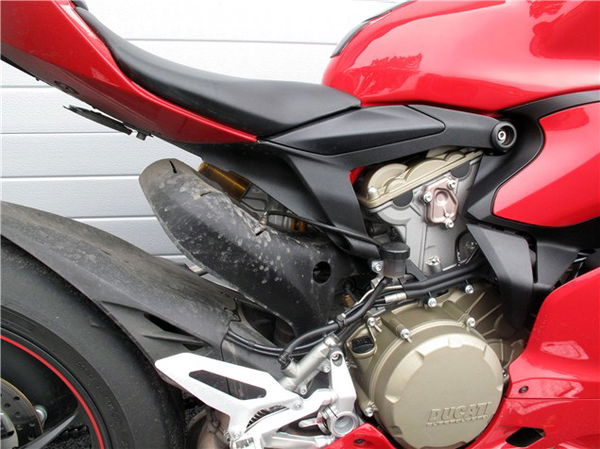
There is a lot of good stuff about the Panigale, then there's the fuel consumption. The Panigale is thirsty, the tank range is hopeless. The only way I can see that fuel consumption could have been high up the development list is when they got to the problem of just how they could get it to consume more of it. Despite its 17-litre tank, the best I could manage was 98 miles before the reserve light came on, which is quite a good effort, going on what other owners reckon they're getting...
Then, like on all the best road tests, I played reserve range roulette. Bad idea. You see, I'm convinced in this Health & Safety age that manufacturers have moved their fuel warning light sensor higher and higher up the tank. On some bikes, it comes on at 90 miles and, after some serious roulette, you fill up 40 miles later and you still have a good litre left.
So when the Panigale fuel light came on, I took it on. In hindsight, there was only ever going to be one winner. On the M40, seven miles in and passing a fuel stop, I shrugged off the opportunity. A mile down the road a sign said the next fuel was in 10 miles. I'd decide on whether or not I'd push past the next one or bottle it, when I got there. 10 miles later and approaching the next fuel stop, it was decision time. The Panigale made the decision for me as it cut out. Clutch in and desperately hoping we'd coast up the slip-road, we made it half-way. Time of death? 18.6 miles.
Ducati definitely haven't been moving the fuel warning sensor up higher.
With just the LED sidelights emitting a glow that a candle would find disappointing, I wasn't about to push the Panigale 100 metres up a slip road and risk being shunted, so, adopting a technique taught to me by a very clever man called Keith Masters - and last used when I owned a Hornet 600 - I tipped the Panigale over until the left handlebar almost touched the floor. I stood it back upright and prodded the starter, prodded it again and we were back in action. We'd covered 112 miles in total using 16.5 of the 17 litres.
Play at many things with the Panigale, but play reserve range roulette at your peril.
With minor services at 7,500 miles and major ones at 15,000 miles, Ducati are working hard to shed their image of being high maintenance bits of jewelry. A Yamaha R1 needs servicing at 6,000 miles and 12,000 miles, a Honda Fireblade at 4,000 and 8,000. Gone are the days where you could accuse a Ducati of being unreliable or picking out the wiring loom as a weak point. I think it's fair to say: they're now up there with the best.
Ducati 1199 Panigale S: Handling and Suspension
I never usually bother with riding modes, I opt for the pig-headed 'I bought it, I want all of it' approach, but in town, the Panigale is best in WET mode, which softens up the suspension, bumps up the traction control, reduces the power output but, crucially, smooths out the throttle response.
In RACE or SPORT mode, do anything but RACING or SPORTING and the Panigale isn't happy on part throttle. It wants it all or nothing, so trying to cut your way through traffic with precision is hard work when the throttle is so eager and, even if completely static, it hunts, making the ride jerky in the midrange. In short, WET is my mode of choice in town because with 195bhp on tap, the Panigale becomes a magnet for pedestrians. Or is it the other way around?
You'd think a tiny Italian superbike would be rubbish at commuting, but the Panigale's petite size, seriously wide-set bars and healthy steering lock make it great for squeezing through small gaps. Infact it's much better than the Suzuki Burgman 650 I've been running recently. A lack of size, weight and a good steering lock are all you need to breeze through town - GS owners with aluminium panniers, take note.
ABS is a great tool for a commuter, especially during the winter months where leaves and rain help make the roads that bit more treacherous. Let's face it, a lot of commuter bikes don't even come with it which I think is daft. I dare say the Pirelli Supercorsa SPs aren't the best for a British winter, but I didn't have any moments on them through town, even when cold. If it were mine, I'd fit a 190-section Michelin Pilot Road 3 or Metzeler Z8.
You don't have to be deranged to buy a Panigale to commute on but while it can do the job without a fuss, it feels a bit like buying an expensive Persian rug ...for your dog to sleep on. But if you can afford to, why not...
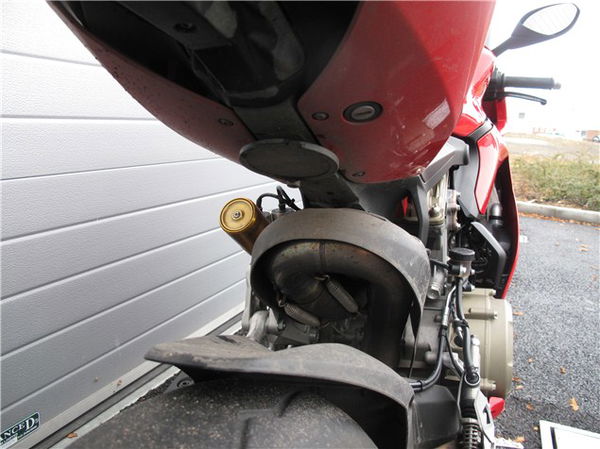
All Ducatis are firm. The Panigale is firmer and in RACE or SPORT mode, it's about as comfortable as a pair of granite underpants. Away from the commute and out on the motorway, the ride is harsh, you can't get away from it tripping over bumps and you can feel every change in tarmac. Great on the racetrack, not so great after 2 hours on the M40 which I now know has a lot of changes in tarmac and quite a lot of over-banding. There's no doubt in my mind that the blokes who surfaced the M40 definitely didn't win the Yas Marina contract...
Then you've got the power and throttle map. Y'see in WET mode the power is down to 120bhp, which is alright in town but a bit rubbish on the open road. GIVE ME EVERYTHING!
RACE mode is full-on, so no good you'd think, which is why in the middle there's SPORT mode. Same '195bhp' but a less aggressive throttle response (195 LO instead of 195 HI) and softer suspension. Just the ticket! Except, it's not.
I ended up running RACE mode with WET suspension settings which sounds about as sensible as inviting Nick Griffin to open an Immigration Reception Centre, but, in RACE mode, the throttle response is so much more precise, in SPORT mode it feels numb and lazy. Also, the suspension in SPORT and RACE feels almost identical, so to iron out those lumps and bumps on the road, WET is best. Oh and in RACE mode you get front-only ABS and I like that. I've never used an ABS-equipped rear brake on a wet road without it making my right foot feel like it belongs to Michael Flatley.
To get the Panigale setup right and feeling best - especially on greasy cold roads - you'd need a more suitable tyre and a play with the preload spanner.
There's only one drawback and that's the fact that in RACE mode, the speedo becomes a lap timer and your speed readout gets shrunk into a small corner of the dash.
On more than one occasion I scrubbed off speed for a speed camera, only to look down and realise I had better give the brake lever another healthy squeeze...
Should I buy the Ducati 1199 Panigale S?
So could you live with and use a Panigale day to day? Yes, but it definitely wouldn't be my first choice for longer distance work as the tank range is woeful, the seat is fairly hard and the wind protection is limited. As a commuter, it is laughably excessive, everyone stares at you and you'll end up getting told off for things you haven't done. Guilty by association. A daily commuter? I don't see why not. But on greasy country roads you can use it, really use it and it's a blast. Soften off the suspension settings, play with the riding modes until you've got it how you like it and ditch the track-focused tyres, opt for the aftermarket seat and you've got yourself a fantastic, capable tool for all conditions.
If you do buy one: buy a flak jacket too, because your neighbours might return fire.
- Model tested: Ducati 1199 Panigale S ABS
- Price: £19,750
��
